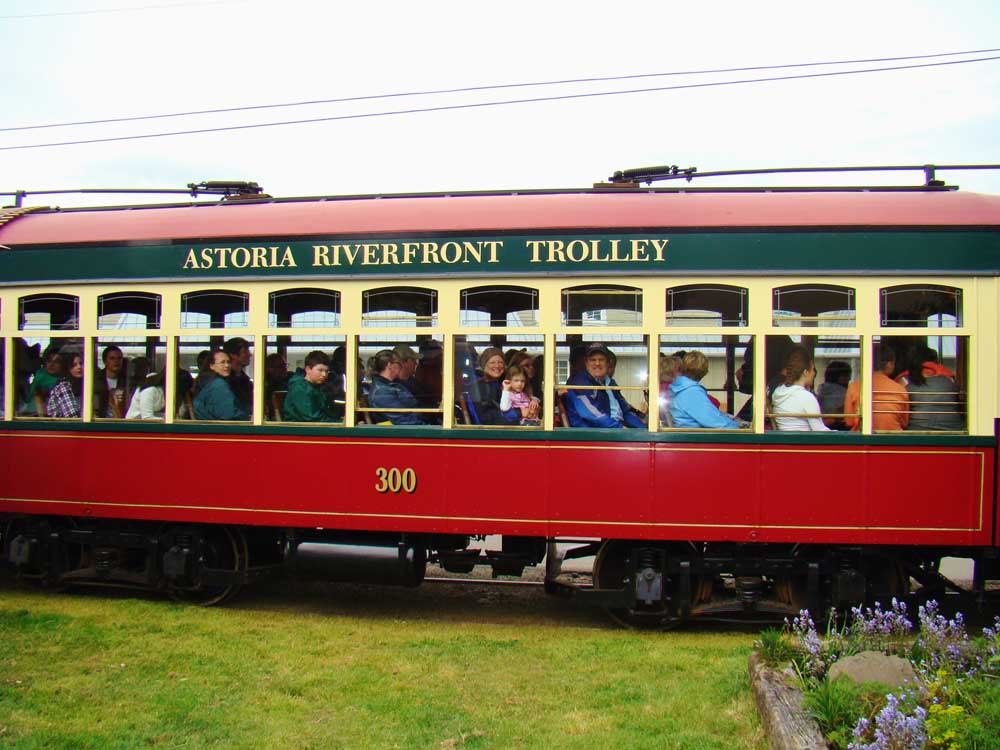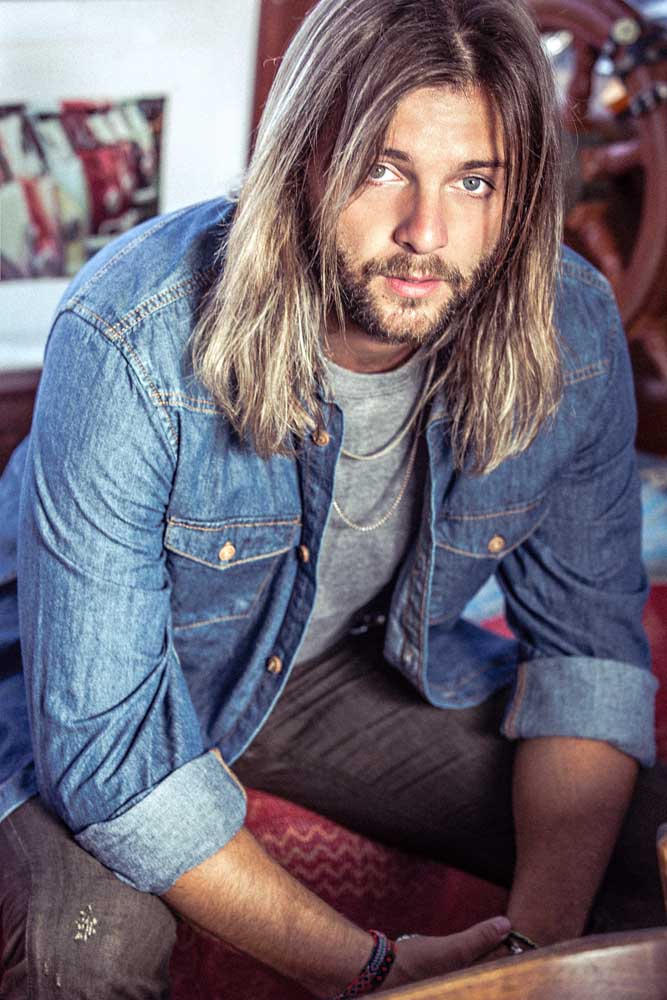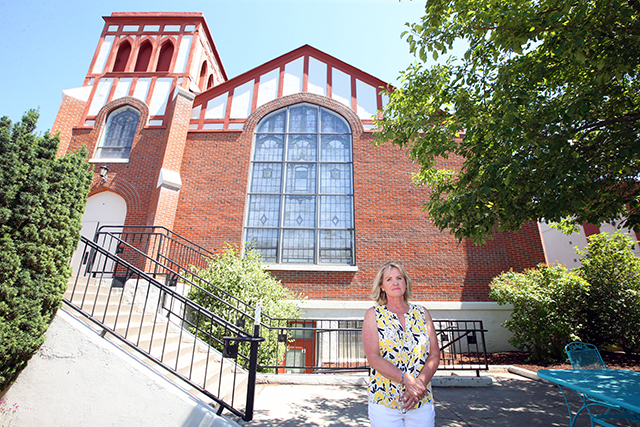What’s old and what’s new in Astoria
Published 12:00 am Sunday, November 20, 2016

- John Gottberg Anderson / For The BulletinThe Astoria Riverfront Trolley, better known to locals as "the Old 300," has been beautifully restored and returned to service on a 2½-mile route from Uniontown to Pier 39. The original trolley served the city from 1913 until World War II.
ASTORIA —
I f you haven’t been to Astoria in the last dozen years or so, it’s not the same decaying fishing town that you might remember. Far from it.
Trending
Not long ago, the oldest American settlement on the Pacific coast had downtown shop windows boarded up. Salmon canneries, plywood mills and railroads had all stopped serving the city of 10,000 in the 1980s and 1990s. Piers where the canneries had once stood were rotting away, and dismal rains (the annual average is 67 inches) did nothing to lift public spirits.
But citizens of this proud city at the mouth of the Columbia River picked themselves up and reinvented their community.
The catalyst was the Liberty Theater, an elegant Italian Renaissance-style movie palace built in 1925 for silent films and traveling vaudeville shows. By the 1990s, the Liberty was so dilapidated, a group of civic leaders led a fundraising campaign that pulled in more than $10 million in public and private money. A complete overhaul ensued, and when the 665-seat theater reopened in mid-2005, it became a showcase for music and the performing arts, complete with Roman columns and elaborate chandeliers.
While the Liberty was in transition, other projects were in progress. Especially notable was the Cannery Pier Hotel & Spa, which opened two months after the theater in August 2005, directly beneath the towering Astoria-Megler Bridge. (That 4-mile span replaced an interstate ferry when it was completed in 1966, 50 years ago.)
Architect-developer Robert “Jake” Jacob had grown up in Astoria and watched his hometown’s demise. He saw the old Union Fishermen’s Cooperative Packing Company, better known as Union Fish, close in 1970. He saw it demolished in 1980, leaving behind a deteriorating wooden pier and hundreds of pilings. And he saw those pilings, extending 600 feet into the river, as a fine place for a hotel.
So he built one. He based the design upon old photos of the cannery, with the same window and roof line, along with faux smokestacks, exposed steel beams and hanging lights. Each of the 46 rooms faces upon the river, where guests can watch giant container ships and other maritime traffic pass throughout the day. Even the Finnish sauna has river views.
Trending
Foundations
Astoria dates its history not from the Lewis and Clark Expedition — although the Corps of Discovery did spend the winter of 1805-06 nearby at Fort Clatsop, a replica of which now is headquarters for Lewis and Clark National Historical Park. But it goes back to May 21, 1811, when a party of settlers sent by New York fur merchant John Jacob Astor stopped where Captain Robert Gray had sailed “The Columbia Rediviva,” into the mouth of the Columbia in 1792.
The first Astorians established a trading post for beaver and sea otter pelts that grew into an important exchange center. Taken over by Great Britain’s Hudson’s Bay Company during the War of 1812 and renamed Fort George, it reverted to joint American-British possession in 1818 and remained so until the creation of the Oregon Territory in 1846.
The first U.S. post office west of the Rockies opened in Astoria in 1847 as Oregon Trail emigrants began to arrive. Logging and fishing became the economic foundation, and scores of northern Europeans, especially Swedes and Finns, settled in the river town. So did Chinese, who went to work in the canneries. Although fires in 1883 and 1922 destroyed downtown Astoria, built mainly on wood pilings above riparian marshland, the town bounced back.
In the years following World War II, 30 separate salmon canneries operated in Astoria — locals referred to the omnipresent stench as “the smell of money” — and the wood-products industry was strong. The Burlington Northern & Santa Fe Railway ran regular service between Astoria and Portland. But the last cannery closed in 1980, the Astoria Plywood Mill shut down in 1989, and the railroad discontinued service in 1996.
Tough times followed. A seemingly incessant drizzle dampened public spirits. But the city saw a future in tourism.
The Columbia River Maritime Museum, on the waterfront since 1982, was remodeled and expanded, reopening in 2002 as the finest museum of its kind north of San Francisco. Among its numerous exhibits is one highlighting the role of Columbia River Bar pilots, who save hundreds of lives a year in the most hazardous stretch of water in North America.
The 1885 home of the first bar pilot, Captain George Flavel, has been twice restored to its Victorian grandeur. The Queen Anne-style Flavel House Museum has been furnished in circa-1900 style by the Clatsop County Historical Society, which also operates a Heritage Museum in Astoria’s 1904 city hall. It is one of scores of beautiful Victorian homes that climb the city’s hills.
Hollywood discovered Astoria. The city starred in movies like “The Goonies” (1984), “Short Circuit” (1985) and “Kindergarten Cop” (1990). The Oregon Film Museum, in the old Clatsop County Jail opposite the Flavel House since 2010, recalls those and other movies.
On the Riverwalk
On the waterfront, the old cannery row has begun to awaken as well. Shops, restaurants and breweries have moved into the forsaken cannery spaces. The abandoned railroad tracks became a corridor for the 2½-mile Riverwalk trail from the Uniontown-Alameda Historic District, beneath the bridge, to the old J.O. Hanthorn Cannery on Pier 39 east of downtown.
And the Old 300, a waterfront trolley system that operated from 1913 until World War II, was restored to service. Locals and visitors alike can wave a $1 bill at the Astoria Riverfront Trolley. Beautifully restored with wood and polished brass, the trolley makes the 40-minute round-trip run from noon to 6 p.m. every rain-free day in spring and summer, and it continued to run on one bright, sunny Friday early this month.
Visitors with a hankering to get out on the water might disembark the trolley at the West Basin Marina and find their way to Slip D-5, where Captain Christopher Lloyd keeps his 40-foot motor cruiser, the “Christina Cousteau.” This luxurious yacht offers tours of two, three and four hours along the historic waterfront and into wildlife sanctuaries.
Farther down the riverfront, the Barbey Maritime Center for Research and Industry is dedicated to the preservation of traditional maritime trades and the teaching of associated skills. And at the far eastern end of the trolley route, Pier 39 is a destination in its own right.
A more-or-less permanent herd of California sea lions makes its home on the floating docks of adjacent Pier 36, and their barking may startle human intruders at most any hour, day or night. Nevertheless, Pier 39 gets plenty of traffic. Its 1875 Hanthorn Cannery has been restored as a historic museum, with displays that recall its former life as a Bumble Bee tuna processing plant. The Pier is also home to a popular coffee house and cafe, a dive shop and the Rogue brewpub, an outpost of the Newport-based brewing company.
In fact, breweries have become a big deal in Astoria, as in so many other parts of Oregon. The well-known Fort George Brewery, which opened in 2007 and now takes up most of a city block on Duane Street between 14th and 15th streets, has been joined by several others. My favorite is Buoy Beer, at Pier 8 on the Riverwalk; not only does it have good beer, but the view from its spacious restaurant is excellent.
The Astoria Brewing Company, which operated as the Pacific Rim Brewing Company within the Wet Dog Café from 1997 to 2008, expanded from four to 15 barrels with a new tap house whose seating overlooks the basement brewing facility. Wet Dog, also on the Riverwalk, still claims to be the city’s original brewery. But Hondo’s Brew & Cork also makes its own beer, and it soon will be joined by Reach Break Brewing, a sour-beer specialist that plans to open before Christmas.
Pilot House Distilling has recently opened on Duane Street, making vodka, gin, whiskey, rum, absinthe and coffee liqueur. Winekraft, on the Riverwalk, and The Cellar on 10th cater to wine lovers. But no one in this small city is as devoted to wines as 90-year-old winemaker Paul van der Veldt, owner of the Shallon Winery for 36 years.
Van der Veldt’s varietals are not wines you’d normally be looking for. “I think I am still the only winery in the world that makes whey wine,” he said. “This should be good for you. It has all the vitamins and minerals that milk has.” The whey goes with cranberries into his Cran du Lait wine, and into his liqueur-rich Chocolate Orange wine. He also makes blackberry and peach wines, as well as a pinot noir called Under the Bridge. The one-man operation is open every afternoon of the year.
Whimsy and waves
Astoria’s newest attraction is the Museum of Whimsy in the former Bank of Astoria building. Opened in June, the 1924 American Renaissance structure hasn’t been a bank since the 1970s. It now houses two floors of owner Trish Bright’s quirky personal collections, dating back to about 1850. There’s lots of beadwork and tribal art, but also vintage clothing, home decor, ships in bottles, wooden masks, pincushions and even an old-fashioned candy counter.
Only a block away, the Garden of Surging Waves, at 11th and Duane streets, celebrates Astoria’s Chinese heritage with its sculptures and architectural features. The city set aside the land for this urban park five years ago, on its 200th anniversary. The Moon Gate, Pavilion of Transition and Platform of Heritage, featuring quotes from ancient Chinese philosophers, are considered to be the first phase of Heritage Square, a larger redevelopment project that envisions a public amphitheater and gathering space.
Astoria Column is not new, but it has a new face. Built atop 600-foot Coxcomb Hill in 1926, it was in scaffolding for much of 2015 and 2016, as the spiraling historical friezes on its face were cleaned and repainted in Italian Renaissance style. Those who climb 164 steps to the observation deck atop the 125-foot tower are rewarded with a panoramic view in all directions, including the mouth of the Columbia. And they can sail toy balsa-wood gliders, available for purchase in a gift shop, from the viewing platform.
Facelifts are also what have given new lives to several 1920s hotels in Astoria’s historic core. The Hotel Elliott was the first of these, reopening in 2003 with 32 redesigned rooms. The Commodore Hotel followed in 2009, and the Norblad Hotel and Hostel — with budget-priced men’s and women’s bunk rooms, as well as private rooms — in 2014. Meanwhile, the old Lamplighter Motel in the Uniontown area, beneath the bridge, has been rechristened the Atomic Inn with an ambient makeover that includes the Rat Pack singing in the lobby.
The best new restaurant in Astoria (it opened in August) is Carruthers, which takes its name from the historic, 1923 Carruthers Building kitty-corner from the Liberty Theater. Capturing the ’20s’ Art Deco atmosphere, the eatery feels like an upper-crust retreat with its high ceilings, gold-rimmed mirrors, marble accents and hip cocktail menu. The distinctive menu has international flair that extends from appetizers through desserts.
Christopher Holen, the energetic chef-owner of Baked Alaska, which rides atop Pier 12, seems always to have a new project in hand. His latest is a television series, an international chefs’ exchange that has already taken him to Iceland and Australia, with Korea next on his list. Meanwhile, he continues to do wonders with seafood, as well as his pizza bistro, lounge and “Chef Daddy” line of seasonings and kitchenware.
Other favorites of mine are the Bridgewater Bistro, Drina Daisy and Bowpicker Fish & Chips. The Bridgewater, beside the bridge and the Cannery Pier, is a great spot for lunch or dinner, and always has good soups on the menu. Drina Daisy, Oregon’s only Bosnian restaurant, is a ma-and-pa establishment whose chef, Fordinka Kanlic, fled war-torn Sarajevo in 1999. There’s always a line at Bowpicker, which occupies a former gillnet fishing boat on a quiet corner between the maritime and history museums.
— John Gottberg Anderson can be reached at janderson@bendbulletin.com.








